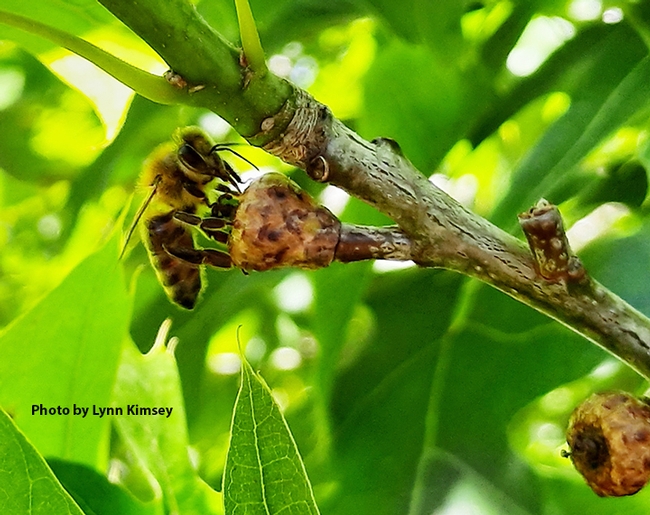This is not something you see every day.
When Lynn Kimsey, director of the UC Davis Bohart Museum of Entomology and UC Davis distinguished professor of entomology, Department of Entomology and Nematology, recently traveled to San Luis Obispo, she saw a honey bee "licking a baby acorn" on an oak tree.
Why was the bee licking a baby acorn?
In her investigation, Kimsey discovered why.
"Apparently the acorn weevil larvae developing in the acorns secrete some kind of sugars--sweet pee if you must. I didn't realize this but apparently acorn honey is a big deal in Eurasia and beekeepers will intentionally move their colonies under oaks for this reason. Weevil pee honey… weird."
"Humans definitely collect the honey from the bees," Kimsey related. "The amount of sweetness from the acorns is way too little for us to do anything with directly."
If you look on YouTube for oak honey, you'll find a product from northern Greece described as "rich, thick, chocolatey, and packed with minerals, enzymes, propolis and goodness; lower glycemic index than most honeys therefore suitable for people wishing to consume a low sugar honey." (See https://youtu.be/vFpH8YBcQlw.)
Indeed. And there's a Raw Honey Shop based in Brighton, UK, that explains what it's all about: "What makes the acorns weep the fluid? There is a species of weevil, which is known as the acorn weevil (Curculio glandium). This weevil burrows into the acorns which causes them to release a sweet fluid, which the bees collect directly from the acorn and then convert it into honey." (Check out their video.)
Who knew?
Attached Images:
